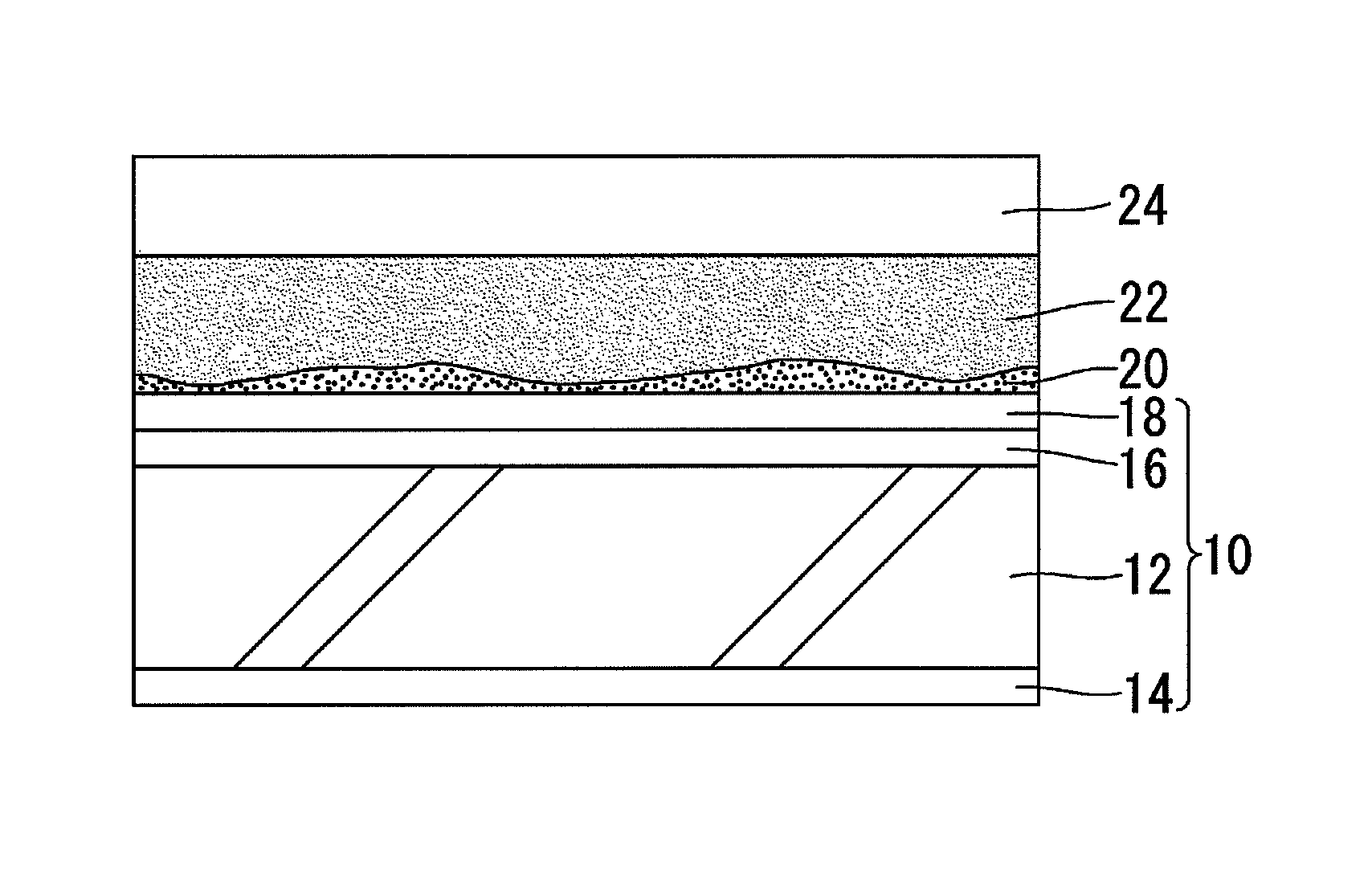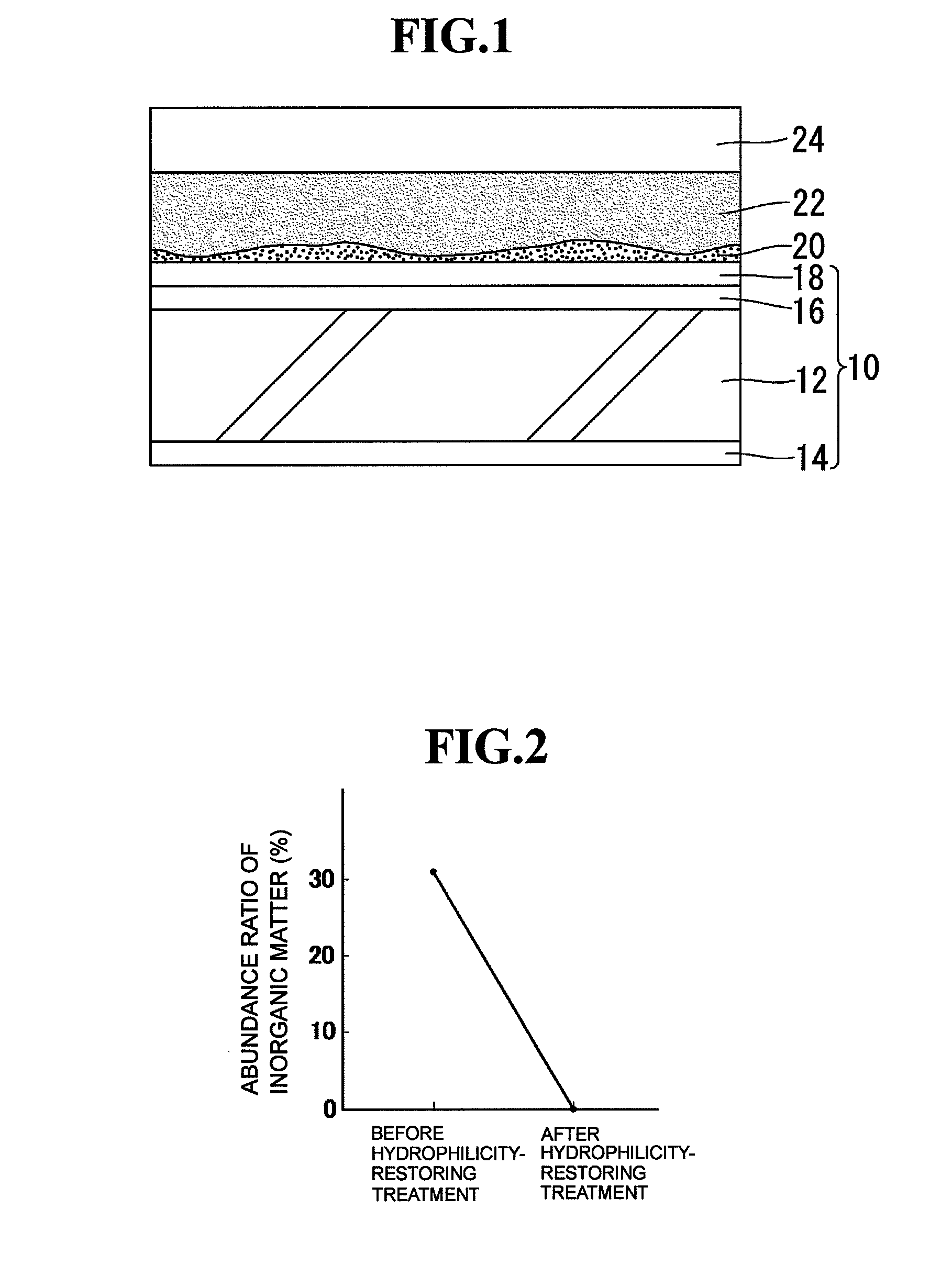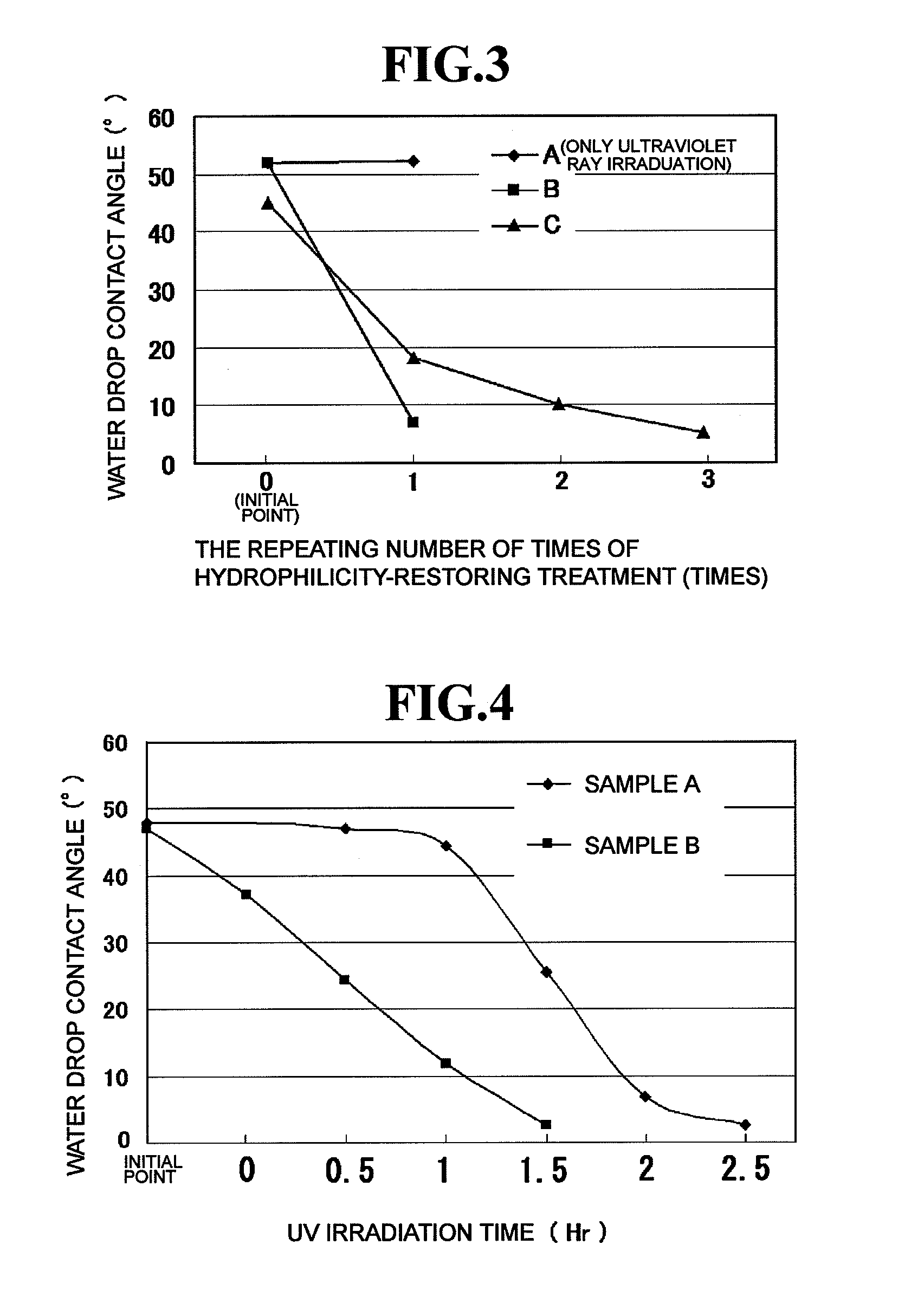Hydrophilicity-restoring agent and method for restoring hydrophilicity
a hydrophilicity-restoring agent and hydrophilicity-restoring technology, applied in the direction of detergent compounding agents, instruments, transportation and packaging, etc., can solve the problems of insufficient dissolution of hydrophilicity-restoring agents, inability to uniformly remove inorganic matter adhesion to the hydrophilic surface, etc., to reduce the inorganic removal effect, reduce the effect of inorganic removal
- Summary
- Abstract
- Description
- Claims
- Application Information
AI Technical Summary
Benefits of technology
Problems solved by technology
Method used
Image
Examples
embodiment 1
[0022]Embodiment 1 of the present invention will be described.
[0023]Citric acid (ligand capable of forming chelate complexes): 30 wt %[0024]Polyethylene glycol (thickener): 30 wt %[0025]Water: 40 wt %
[0026]Polyethylene glycol was mixed with water, and citric acid was dissolved in the resulting mixture to prepare a gel of a hydrophilicity-restoring agent. The prepared gel had a viscosity at 25° C. of from 10 to 15 cP. Note that citric acid may be dissolved in water before polyethylene glycol is mixed with water.
[0027]The hydrophilicity-restoring agent prepared as described above is applied to the surface of a hydrophilic mirror for vehicles to which an inorganic stain has adhered to thereby remove the inorganic stain by the chelating effect of citric acid. FIG. 1 schematically shows a section structure in the state where a hydrophilicity-restoring agent 22 prepared as described above is applied to a hydrophilic mirror 10 for vehicles to the surface of which an inorganic stain 20 (suc...
embodiment 2
[0035]Embodiment 2 of the present invention will be described. In Embodiment 2, malic acid was used as a ligand capable of forming chelate complexes instead of citric acid used in Embodiment 1.
[0036]Malic acid (ligand capable of forming chelate complexes): 30 wt %[0037]Polyethylene glycol (thickener): 30 wt %[0038]Water: 40 wt %
[0039]Polyethylene glycol was mixed with water, and malic acid was dissolved in the resulting mixture to prepare a gel of a hydrophilicity-restoring agent. The prepared gel had a viscosity at 25° C. of from 10 to 15 cP. Note that malic acid may be dissolved in water before polyethylene glycol is mixed with water.
[0040]A member having a hydrophilic surface such as a hydrophilic mirror for vehicles, whose hydrophilicity has been reduced by the adhesion of inorganic matter to the hydrophilic surface, can be subjected to the hydrophilicity-restoring treatment having the same steps as in Embodiment 1 using the hydrophilicity-restoring agent prepared as described a...
embodiment 3
[0045]Embodiment 3 of the present invention will be described. In Embodiment 3, xanthan gum was used as a thickener instead of polyethylene glycol used in Embodiment 1.
[0046]Citric acid (ligand capable of forming chelate complexes): 30 wt %[0047]Xanthan gum (thickener): 0.3 wt %[0048]Water: 70 wt %
[0049]Citric acid was dissolved in water to prepare an aqueous citric acid solution. The aqueous citric acid solution was heated and mixed with xanthan gum to prepare a gel of a hydrophilicity-restoring agent. The prepared gel had a viscosity at 25° C. of from 75 to 85 cP.
[0050]A member having a hydrophilic surface such as a hydrophilic mirror for vehicles, whose hydrophilicity has been reduced by the adhesion of inorganic matter to the hydrophilic surface, can be subjected to the hydrophilicity-restoring treatment having the same steps as in Embodiment 1 using the hydrophilicity-restoring agent prepared as described above to thereby restore the hydrophilicity of the hydrophilic surface.
>
[...
PUM
| Property | Measurement | Unit |
|---|---|---|
| viscosity | aaaaa | aaaaa |
| viscosity | aaaaa | aaaaa |
| viscosity | aaaaa | aaaaa |
Abstract
Description
Claims
Application Information
 Login to View More
Login to View More - R&D
- Intellectual Property
- Life Sciences
- Materials
- Tech Scout
- Unparalleled Data Quality
- Higher Quality Content
- 60% Fewer Hallucinations
Browse by: Latest US Patents, China's latest patents, Technical Efficacy Thesaurus, Application Domain, Technology Topic, Popular Technical Reports.
© 2025 PatSnap. All rights reserved.Legal|Privacy policy|Modern Slavery Act Transparency Statement|Sitemap|About US| Contact US: help@patsnap.com



